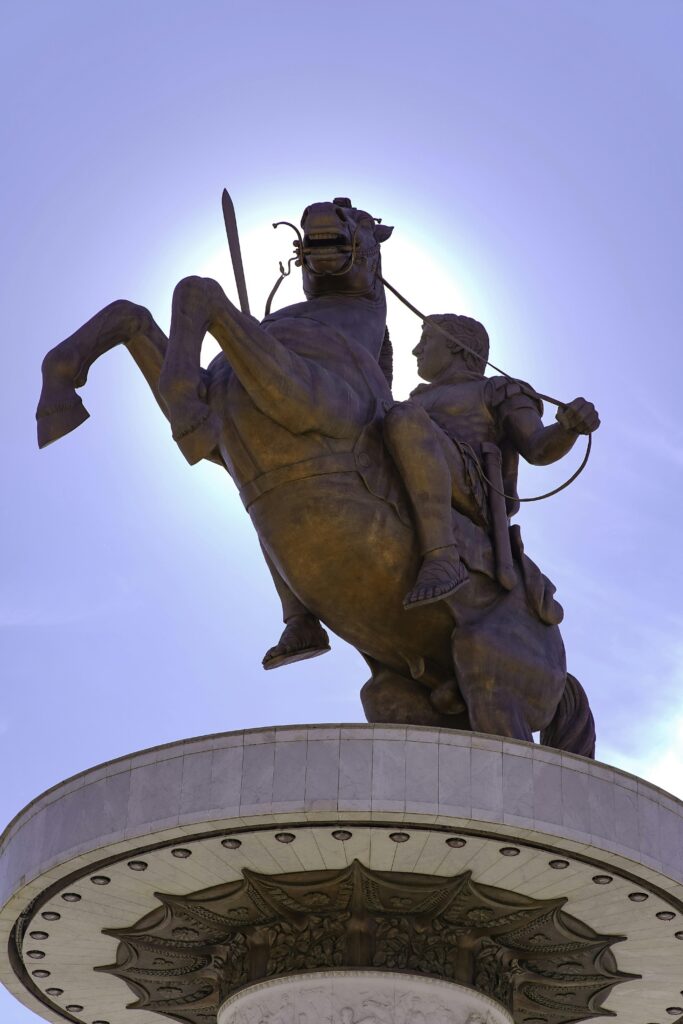The Battle of Agincourt stands as one of the most iconic and decisive clashes in medieval history, marking a pivotal moment in the Hundred Years’ War between England and France. Fought on October 25, 1415, this remarkable English victory against overwhelming odds has fascinated historians and military enthusiasts for centuries. In this article, we will explore the key factors that led to the triumph at Agincourt, the strategies employed by King Henry V and his troops, and the lasting impact of the battle on English and European history. Whether you’re a history buff or a curious reader, join us as we delve into the story behind this legendary battlefield success.
Table of Contents
- The Strategic Context Leading to the Battle of Agincourt
- Tactical Innovations That Secured English Victory
- Lessons from Agincourt for Modern Military Strategy
- Preserving the Legacy of Agincourt Through Historical Scholarship
- In Conclusion
The Strategic Context Leading to the Battle of Agincourt
The early 15th century was a period rife with volatility, where the fragile peace between England and France was perpetually threatened by unresolved claims and political ambitions. The English King Henry V inherited a kingdom eager to reclaim lost French territories after decades of intermittent conflict known as the Hundred Years’ War. Against a backdrop of French internal strife and weakened nobility, Henry seized the opportunity to press his dynastic claim, setting the stage for an unprecedented confrontation. The strategic calculus was clear: capitalize on French divisions and secure a decisive military victory to legitimize English authority on the Continent.
Several pivotal factors shaped the battlefield dynamics leading up to the clash near Agincourt:
- Numerical Disadvantage: The English army, heavily outnumbered, relied on tactical ingenuity rather than brute force.
- Terrain Selection: Henry chose the narrow battlefield deliberately, neutralizing the advantage of French cavalry and numbers.
- Logistical Constraints: The exhausting march through hostile territory drained French morale and resources before the battle even began.
- Weather Conditions: Rain transformed the battlefield into a muddy quagmire, which further hampered the heavily armored French knights.
Tactical Innovations That Secured English Victory
The English army’s success at Agincourt hinged on several groundbreaking tactical decisions that capitalized on their strengths while exploiting the weaknesses of the French forces. Central to this was the strategic deployment of the longbowmen, who were positioned along the flanks to unleash devastating volleys of arrows. This setup not only decimated the heavily armored French knights before they could close in, but also created a psychological barrier that stalled their momentum. The English soldiers also cleverly utilized the narrow, wooded battlefield terrain to funnel the advancing French into confined spaces, turning their numerical advantage into a significant liability.
Additionally, King Henry V’s command emphasized discipline and innovative use of terrain that redefined medieval battle conventions. The English forces erected sharpened wooden stakes in front of the archers to blunt the cavalry charges, an often overlooked but vital defensive innovation. Meanwhile, the coordination between infantry and archers was masterfully executed, ensuring a continuous pressure that gradually wore down the French. These combined tactical measures not only neutralized the opponent’s superior numbers but also demonstrated a profound understanding of adaptive warfare, securing a victory that would echo through military history.
- Use of longbowmen as a dominant ranged force disrupting French formations
- Exploitation of terrain to constrain enemy movement
- Installation of defensive stakes to repel cavalry charges
- Integrated coordination between infantry and archers for continuous assault
Lessons from Agincourt for Modern Military Strategy
The enduring significance of Agincourt lies not just in its historical drama but in the timeless strategic principles it offers. At its core, the battle underscores the potent impact of terrain and preparation in leveling the playing field against a numerically superior foe. Modern military strategists can draw from Henry V’s utilization of narrow battlegrounds and muddy conditions, which effectively neutralized the French cavalry’s mobility. This highlights the importance of environmental mastery—choosing and shaping battle conditions to fit tactical strengths rather than rigidly adhering to conventional force deployment. The victory also illustrates the value of innovative force composition, where longbowmen delivered decisive firepower, enabling agility and ranged dominance without reliance on heavy armor or traditional melee strength.
Beyond physical positioning, Agincourt reinforces the critical role of morale and leadership. Despite being exhausted and outnumbered, the English troops’ disciplined cohesion and Henry’s charismatic command forged resilience and unity under pressure. Today’s military doctrine continues to emphasize the psychological edge—raising troop confidence and exploiting opponent vulnerabilities beyond mere numbers or technology. Modern applications include:
- Maximizing the effectiveness of asymmetric warfare through strategic force multipliers like terrain and specialized units.
- Leveraging adaptable leadership styles to instill combat motivation in diverse, high-stress environments.
- Integrating combined arms tactically to exploit enemy weaknesses identified through reconnaissance and intelligence.
The lessons from Agincourt remain profoundly relevant, reminding military planners that innovation and strategy often trump mere resource superiority.
Preserving the Legacy of Agincourt Through Historical Scholarship
Historical scholarship has been instrumental in keeping the memory of this pivotal battle alive, offering not just detailed accounts of the clash but also interpreting its wider significance in English and European history. Scholars meticulously analyze primary sources, from chronicles to battlefield archaeology, ensuring that the nuanced strategies, heroics, and human experiences are not lost to time. This rigorous academic attention helps transform a mere event into a symbol of resilience and tactical brilliance, inspiring successive generations to appreciate the complexities of medieval warfare and leadership.
To deepen our understanding, historians often engage in:
- Interdisciplinary studies combining military history, political context, and social impact
- Collaborations with archaeologists to unearth artifacts that paint a vivid picture of the battlefield environment
- Publication of critical editions of original manuscripts, accompanied by expert commentary and contextualization
- Public lectures and symposiums that foster wider community engagement and educational outreach
Through these efforts, the legacy of Agincourt extends beyond textbooks, becoming a living dialogue between the past and present, enriching our collective cultural heritage.
In Conclusion
In revisiting the Battle of Agincourt, we gain more than just a glimpse into a momentous medieval conflict; we uncover the layers of strategy, resilience, and leadership that shaped this pivotal English triumph. This battle not only altered the course of the Hundred Years’ War but also left an indelible mark on military history. Understanding Agincourt reminds us of how determination and tactical ingenuity can overcome daunting odds—a lesson as relevant today as it was over six centuries ago. Whether you’re a history enthusiast or a casual reader, the legacy of Agincourt continues to inspire and provoke reflection on the enduring impact of warfare and national identity.













